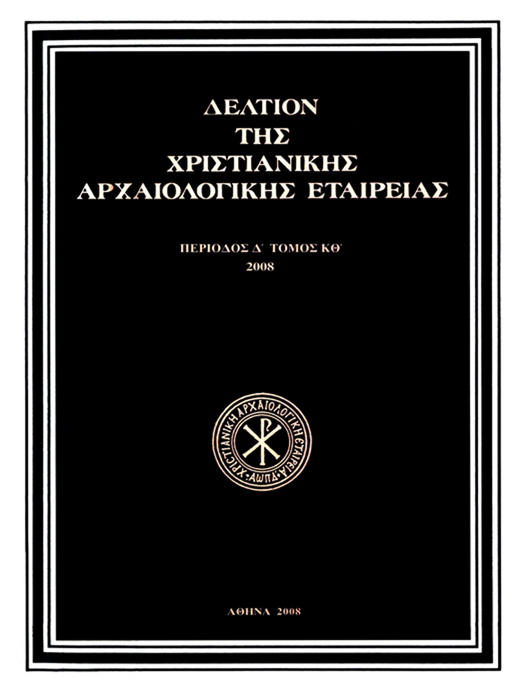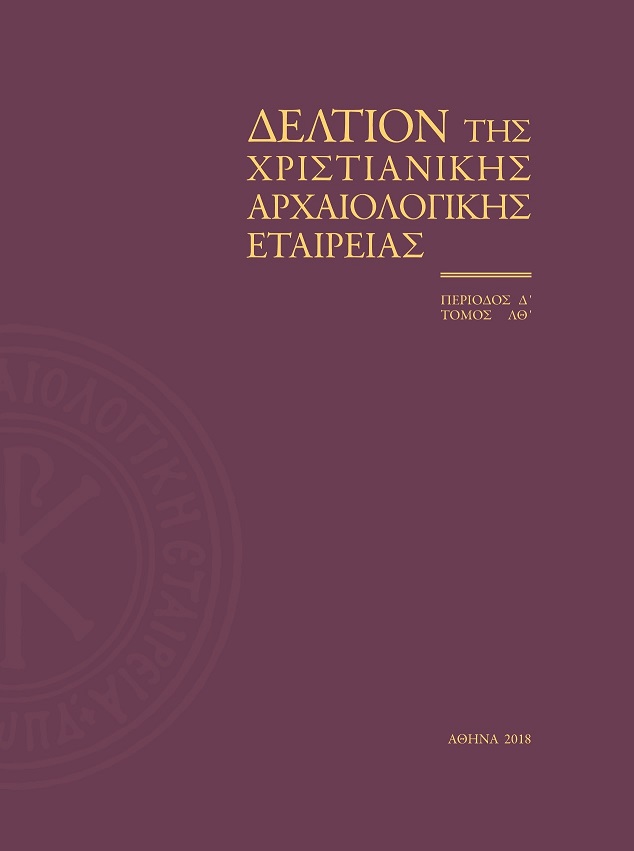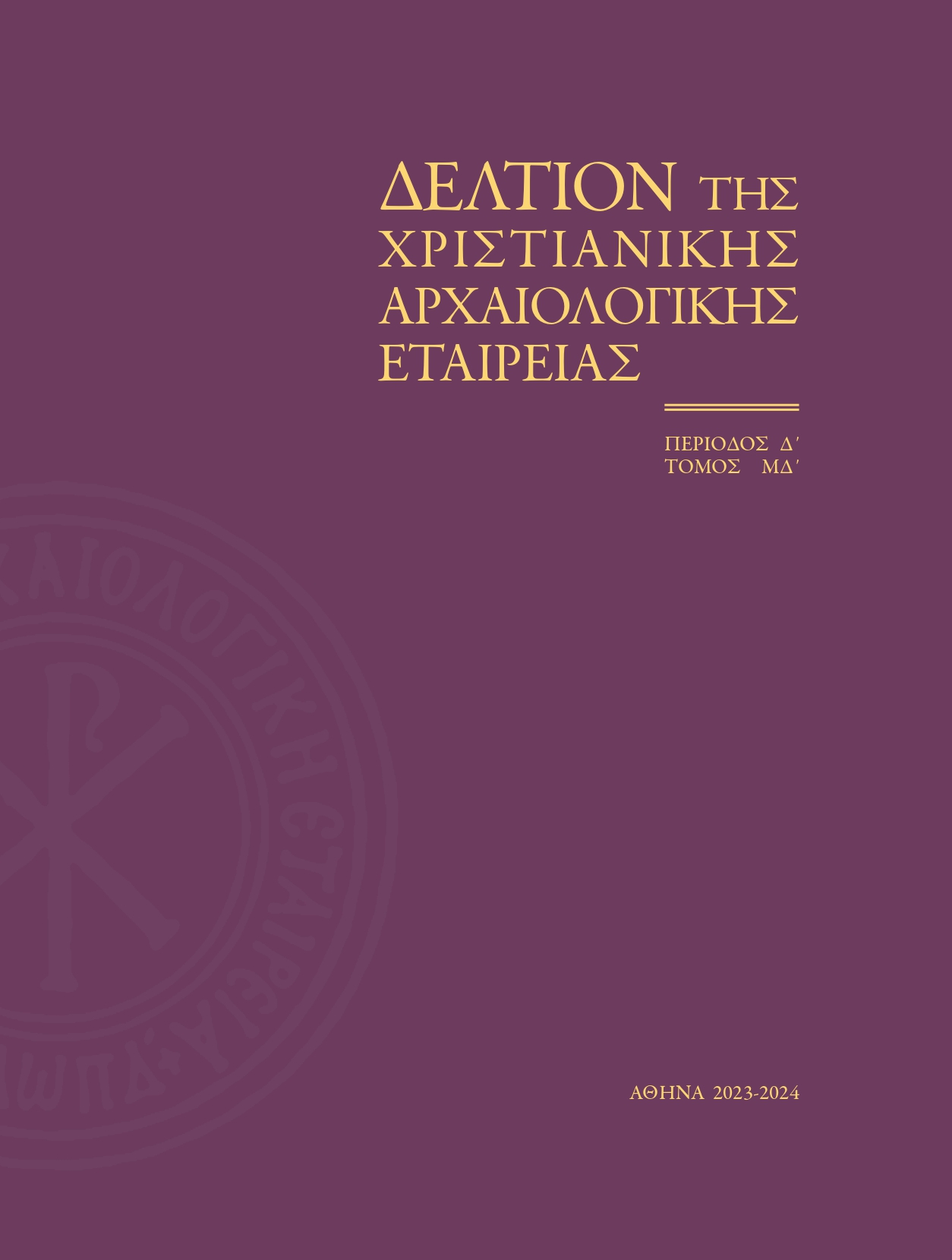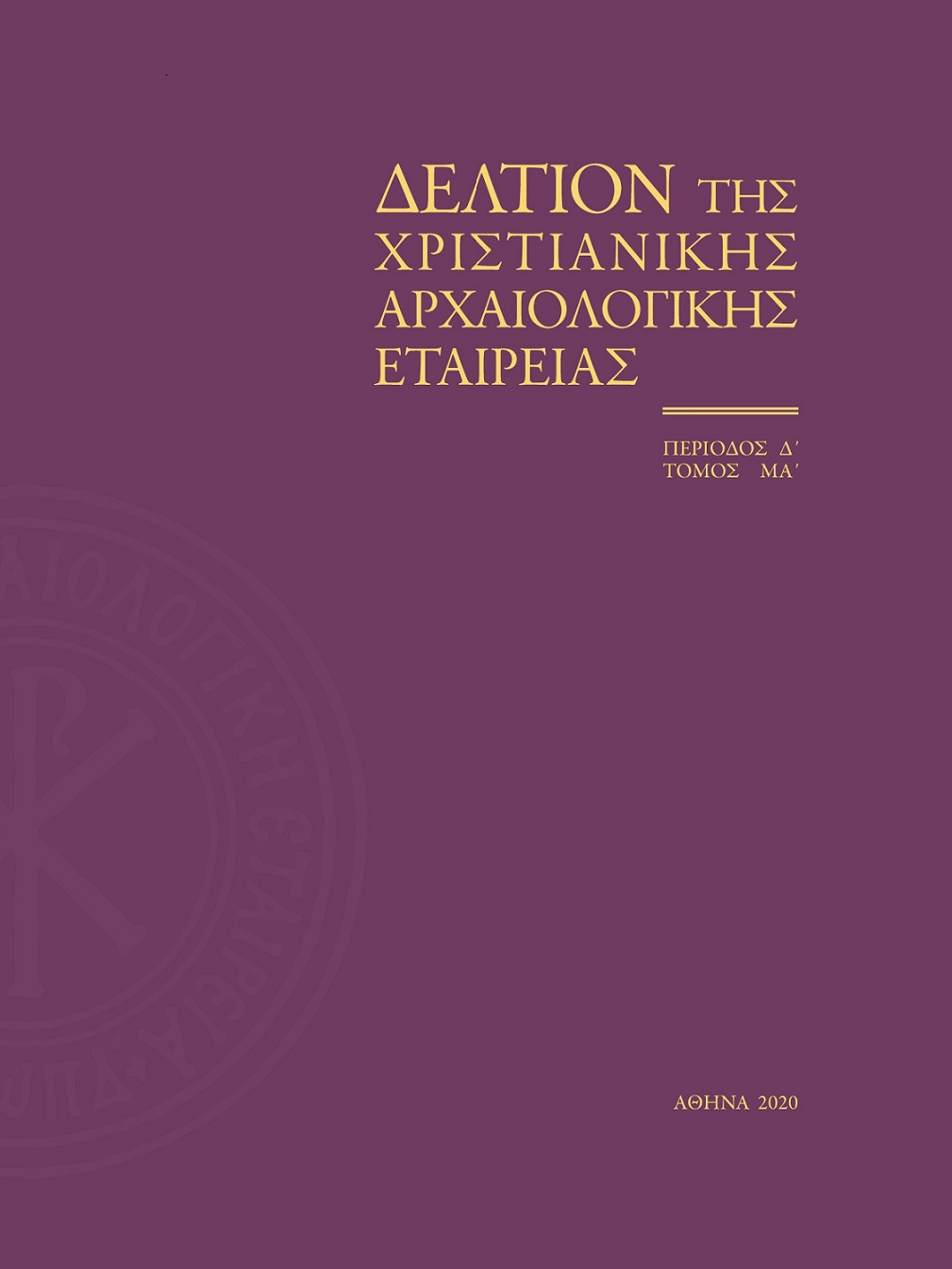Το ευαγγελιστάριο της Τραπεζούντας (κώδικας gr. 21 και 21a) στη ρωσική εθνική βιβλιοθήκη, Αγία Πετρούπολη, και η βυζαντινή τέχνη μετά τη Μακεδονική αναγέννηση

Περίληψη
Το άρθρο εξετάζει τις μικρογραφίες του λεγόμενου Ευαγγελισταρίου της Τραπεζούντας, που φυλάσσεται στη Ρωσική Εθνική Βιβλιοθήκη, στην Αγία Πετρούπολη. Ενώ η χρονολόγηση του χειρογράφου στο β΄ μισό του 10ου αιώνα είναι ευρέως αποδεκτή, ο τόπος δημιουργίας του παραμένει αβέβαιος. Η συγγραφέας απορρίπτει παλαιότερη υπόθεση, σύμφωνα με την οποία το χειρόγραφο δημιουργήθηκε στη Μικρά Ασία. Κατά την άποψη της, οι μικρογραφίες του Ευαγγελισταρίου της Τραπεζούντας, μαζί με ορισμένα άλλα έργα τέχνης, κυρίως κωνσταντινουπολίτικης προέλευσης, αντιπροσωπεύουν μια εκφραστική αντι-κλασική τάση που εμφανίστηκε στο γ΄ τέταρτο του 10ου αιώνα ως αντίδραση στον κλασικισμό της Μακεδονικής Αναγέννησης.
Λεπτομέρειες άρθρου
- Πώς να δημιουργήσετε Αναφορές
-
ZAKHAROVA, A. (2011). Το ευαγγελιστάριο της Τραπεζούντας (κώδικας gr. 21 και 21a) στη ρωσική εθνική βιβλιοθήκη, Αγία Πετρούπολη, και η βυζαντινή τέχνη μετά τη Μακεδονική αναγέννηση. Δελτίον της Χριστιανικής Αρχαιολογικής Εταιρείας, 29, 59–68. https://doi.org/10.12681/dchae.606
- Ενότητα
- Άρθρα
Οι συγγραφείς των άρθρων που δημοσιεύονται στο Δελτίον της Χριστιανικής Αρχαιολογικής Εταιρείας (εφεξής Δελτίον) διατηρούν τα δικαιώματα πνευματικής ιδιοκτησίας επί των άρθρων τους, αναγνωρίζοντας στο περιοδικό το δικαίωμα της πρώτης δημοσίευσης και στο ΕΙΕ/ ΕΚΤ το δικαιώμα να φιλοξενεί και να διαθέτει το περιεχόμενο των άρθρων στις πληροφοριακές υποδομές του σύμφωνα με τον παρόντα κανονισμό Άρθρα που δημοσιεύονται στο Δελτίον και στις πληροφοριακές υποδομές του ΕΙΕ/ ΕΚΤ μπορούν να χρησιμοποιούνται ελεύθερα με αναφορά στο συγγραφέα και στην πρώτη δημοσίευση για μη κερδοσκοπικούς σκοπούς με υποχρέωση παρόμοιας διανομής. Η Χριστιανική Αρχαιολογική Εταιρεία και το ΕΙΕ/ ΕΚΤ διατηρεί το δικαίωμα να δημοσιεύει, να αναπαραγάγει, να παρουσιάζει στο κοινό, να διανέμει και χρησιμοποιεί άρθρα που δημοσιεύονται στο Δελτίον σε οποιοδήποτε μέσο και μορφή είτε μεμονωμένα είτε ως μέρη συλλογικών έργων, για όλο το χρόνο διάρκειας προστασίας της πνευματικής ιδιοκτησίας και για όλες τις χώρες του κόσμου. Αυτό περιλαμβάνει ενδεικτικά και όχι αποκλειστικά, το δικαίωμα δημοσίευσης των άρθρων σε τεύχη του περιοδικού Δελτίον, αναπαραγωγής και διανομής μεμονωμένων αντιγράφων των άρθρων, αναπαραγωγής ολοκλήρων των άρθρων σε άλλη έκδοση της Χριστιανικής Αρχαιολογικής Εταιρείας, και αναπαραγωγής και διανομής των άρθρων ή περίληψης αυτών με χρήση πληροφορικού συστήματος αποθετηρίου του ΕΙΕ/ ΕΚΤ.





